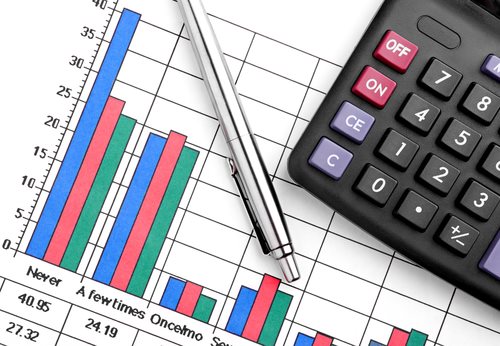
Inalienable Rights: The Foundation of Freedom
What are inalienable rights, and why are they so important? The concept of inalienable rights has its roots in the Enlightenment, when thinkers like John Locke and Jean-Jacques Rousseau developed theories of natural law and individual freedoms that challenged the authority of absolute monarchs and other forms of tyranny. Today, inalienable rights are central to the political and legal systems of many countries, including the United States, where the Declaration of Independence famously proclaims that all men are created equal, endowed by their Creator with certain unalienable Rights, that among these are Life, Liberty and the pursuit of Happiness. But what exactly does it mean to have inalienable rights, and how do they function in practice?
Defining Inalienable Rights
Inalienable rights, also known as natural rights or fundamental rights, are basic human rights that are considered to be inherent, universal, and indivisible. They are not bestowed by any particular government or authority, but are believed to be part of our natural state of existence as human beings. The term inalienable means that these rights cannot be surrendered or taken away by any outside force, such as a government or a tyrannical ruler. Some of the most commonly recognized inalienable rights include:
– The right to life: This includes not only the right to physical survival, but also the right to live a meaningful and fulfilling existence.
– The right to liberty: This encompasses a wide range of freedoms, such as the freedom of speech, assembly, and religion, as well as the right to privacy, due process, and equal protection under the law.
– The right to property: This includes the right to own and control one’s possessions and resources, as well as the right to seek out and pursue economic opportunities.
– The right to pursue happiness: This refers to the individual’s right to pursue their own well-being and fulfillment, and to make choices for their own lives without undue interference from outside forces.
Of course, there is often debate and disagreement over the precise scope and application of these rights, and how they should balance against each other in different contexts. Some advocates, for example, might argue that the right to life should take priority over the right to freedom of speech in certain circumstances, while others might prioritize economic freedoms over social and political rights. Nevertheless, the idea of inalienable rights remains a cornerstone of many legal, moral, and political systems around the world.
The Role of Inalienable Rights in Modern Society
Although the concept of inalienable rights has been around for centuries, it continues to be highly relevant in modern society. In many ways, our contemporary world is more complex and interconnected than ever before, and this poses numerous challenges to our ability to protect and uphold basic human rights. For example, advances in technology have made it easier than ever for governments, corporations, and other entities to exert control over individuals’ lives and infringe upon their freedoms. Similarly, globalization and the rise of multinational corporations has led to greater economic inequality and exploitation, which can undermine individuals’ ability to exercise their fundamental rights.
At the same time, there are also many instances of individuals and groups standing up for their inalienable rights, both in the face of massive global challenges and in their everyday lives. For example, the Black Lives Matter movement in the United States has drawn attention to the ongoing struggle for racial justice and equality, which is itself a reflection of the broader struggle to secure basic human rights for all people. Similarly, the #MeToo movement, which began as a grassroots effort to raise awareness of sexual harassment and assault, has highlighted the ways in which gender-based discrimination and violence can violate individuals’ inalienable rights to safety, dignity, and respect.
In the legal sphere, the concept of inalienable rights plays a crucial role in many different areas of law, from constitutional law and civil rights to international human rights and criminal justice. For example, the U.S. Constitution’s Bill of Rights is largely based on the idea of inalienable rights, and it protects a wide range of individual liberties such as freedom of speech, religion, and the press. Similarly, the Universal Declaration of Human Rights, adopted by the United Nations in 1948, recognizes the importance of inalienable rights and lays out a framework for protecting them on a global scale.
Protecting Inalienable Rights in Pandemic Times
The recent pandemic has upended many aspects of daily life and posed numerous challenges to our ability to exercise our inalienable rights. With governments around the world implementing strict lockdowns and travel restrictions, many individuals have found themselves either unable to leave their homes or unable to travel freely across borders. This has raised important questions about the balance between individual freedom and collective responsibility, and how best to ensure that everyone’s inalienable rights are respected and protected even in the face of a global crisis.
In many countries, legal and political debates have centered around issues such as mandatory mask-wearing, vaccine distribution, and travel bans. Some have argued that these measures are necessary to protect public health and prevent the spread of the virus, while others have pointed to the potential infringements on individual rights and freedoms that such measures can entail. One key challenge has been to find a way to balance these competing interests in a way that maximizes both public safety and individual liberties.
Conclusion
In the end, the concept of inalienable rights remains a bedrock principle of many different legal, political, and ethical systems around the world. Whether we are talking about individual liberties, economic opportunities, or basic human dignity, the idea that these fundamental rights are inherent, universal, and inalienable remains as relevant today as it ever has been. While the challenges facing human rights may continue to evolve and shift over time, the importance of protecting and upholding these essential freedoms remains as crucial as ever in building a more just, equitable, and free society for all.
What are Inalienable Rights?
Inalienable rights (also referred to as natural or human rights) are rights awarded to human beings that may not be taken away by a religious or governmental institution, except in specific situations and according to due process of the law. For instance, the right to liberty may be limited if an individual is found guilty of a felony by a formal court of law.
Inalienable rights are rights that are not dependent upon the customs, beliefs or laws of any particular
government or culture. Because of this standing, inalienable rights are universal. These rights are distinct from legal rights, which are those bestowed on to an individual by the law of a particular jurisdiction’s legal system, and thus are relative to specific governments and cultures.
A legal right may be codified by a statutory, constitutional, contractual, common, and regulatory or international law. A legal right is typically qualified by the law which created the right. A legal right can be
enforced by the court of law against the individual who has invaded or infringed upon it. The right may be enforced by an injunction or a court order, which will prohibit the other part from infringing upon a right, through the delivery of monies to the holder of the legal right. If an individual’s right to liberty is violated, the individual may bring an action so that a court of law may order the party’s release.
By contrast, the theory behind a natural or inalienable law is related to that of a human right—many societies do not recognize a difference between the two fields of law, while others will choose keep the terms separate to eliminate features that are associated with natural rights. In a specific sense, natural rights are provided and upheld beyond the authoritative capabilities of any international body or government. The Universal Declaration of Human Rights is the premiere legal instrument responsible for enshrining a conception of natural rights into international law.
Inalienable rights are commonly interpreted and understood as the fundamental rights to which an individual is inherently entitled to, simply because they are human beings. As a result of this definition, inalienable rights are conceived as egalitarian and universal. The doctrine of inalienable rights is international in theory and practice; these rights are placed within global, international and regional institutions and in the policies of non-governmental entities throughout the world.
Philosophy of Inalienable Rights:
The philosophy of inalienable rights will attempt to examine the basis of the concept of human rights and examines its justification and content. One of the most widely accepted philosophies concerning inalienable
rights attach the universal rights to natural law. Other theories state that inalienable rights codify general moral behavior sculpted as a human social product developed by a process of social and biological evolution.
Regardless of the approach, these philosophies examine the general notion that human beings in a society accept and subsequently behave rules from legitimate institutions in exchange for economic and security advantages.
The two primary theories that dominate contemporary inalienable rights discussions are the will theory and the interest theory. The will theory attempts to establish the validity of inalienable rights based on the human capacity for freedom, whereas the interest theory claims that the principal function of inalienable rights is to promote and protect certain indispensable human interests.
What are Human Rights?
Human rights, which are a form of inalienable rights, are the rights inherent to all beings, regardless of their place of residence, nationality, gender, ethnic or national origin, religion, language or any other status. As a result, all human beings are entitled to human rights without discrimination. Human rights are interdependent, indivisible and interrelated.
These types of inalienable rights are typically expressed and guaranteed by a nation’s set of laws, their treaties, and a customary application of international law, general principles or any other source or interpretation of international law. Because of these legal buttresses, human rights enforce certain obligations of a government institution to act in certain ways or to refrain from implementing certain acts, to protect and promote the fundamental freedoms of human beings.
The principle of human rights is based on the cornerstone of international law. The principle of international human rights law was formally emphasized in the Universal Declaration on Human Rights in 1948. Since this
implementation, human rights have been reiterated through a number of international human rights conventions, resolutions and declarations. For example, the 1993 Vienna World Conference on Human Rights enforced the States to protect and promote all human rights and freedoms, regardless of the cultural, economic and political systems.
All states associated with the Declaration on Human Rights have ratified at least four of the core human rights treaties. This majority implementation creates legal obligations for the attached governments to promote and protect such rights on a universal level. Human rights are therefore deemed inalienable rights; they should never be stripped from an individual, except if the person seriously violated a law or under specific situations.
All human rights, whether they are political or civil, are interdependent and indivisible. For example, the right to life, the rights to work, the rights to receive education, or collective rights, such as the rights to self determination and development are interrelated, interdependent and indivisible. These rights although different with regards to what they offer are related; the promotion of one right will facilitate the advancement of another, while the deprivation of one will adversely affect the others.
Rights offered by the Universal Declaration of Human Rights:
Article I: Human beings are born equal and free. Human beings are endowed with conscience and reason and should interact with one another in a spirit of brotherhood.
Article II: All human beings are entitled to the freedoms and rights set forth in their nation’s Declaration. These inalienable rights are awarded without distinction of any fashion, such as the color, language, religion, political or race of a being. Moreover, no distinction will be made on the basis of international, political or jurisdictional status of the nation to which an individual belongs or resides.
Article III: Every human being possesses the right to liberty, life and security.
Article IV: No human being will be held in servitude or slavery; the slave trade is prohibited in all forms.
Article V: No human being is subjected to cruel punishment. Torture or degrading treatment of an individual shall not be used as a form of punishment.
Article VI: Every human being maintains the right to recognition as a human before the law.
Article VII: All human beings are regarded as equal before the law. As a result, all human beings are entitled to equal protection. All human beings are entitled to equal protection against any form of discrimination in violation of the Universal Declaration of Human Rights and against any form of incitement to such
discrimination.
Article VIII: All human beings have to right to secure an effective remedy by competent tribunals for acts which violate the fundamental rights granted to the individual by the constitution or law of the nation.
Article VIII: No human being shall be subjected to arbitrary detention, exile or arrest.
Article X: Every human being is entitled to a fair and public hearing by an impartial and independent tribune, in the determination of the individual’s obligations and rights and of any charge against him or her.
Article XI: Any human being charged with a penal violation will be presumed innocent until he or she is proven guilty according to law in a trial. No human being shall be deemed guilty of any offense on account of any omission or act which did not establish a violation under national or international law at the time it was
committed.
Article XII: No human being will be subjected to arbitrary interference with the individual’s family, privacy, home or correspondence. Every human being has the right to be protected by law against attacks or interference.
Article XIII: Every human being has the right to freedom of residence and movement. Every human
being has the right to leave any nation, including his own, and the right to return to his nation.
Article XIIV: Every human being has the right to enjoy and seek in other nations asylum from persecution.
Article XV: Every human being has the right to a nationality.
Article XVI: Human beings of a legal age possess the right to marry and start a family. These individuals must enter marriage only if full consent of the spouses is realized. The Universal Declaration of Human Rights states that the family is the fundamental unit of a society and is therefore entitled to protection by the society in a nation.
Article XVII: Every human being has the right to own property; no individual shall be deprived of the right to own property.
Article XVIII: Every human being has the right to freedom of thought, religion and conscience. This human right includes the right to change religions or beliefs.
Article XIX: Every human being has the right to freedom of expression and opinion. This human right includes the freedom to hold opinions without being impeded from seeking, receiving or interpreting ideas through any form of media.
Article XX: Every human being has the right to freely assemble and associate in a peaceful manner. No human being may be compelled to belong to any organization or association if said groups do not break the law.
Article XXI: Every human being has the right to participate in his or her nation’s government, directly or through its representatives. Every human being has the right of equal access to serve in his or her country. The will of people is the basis of the authority of a government.
Article XXII: Every human being, as a member of society, has the right to social security.
Article XXIII: Every human being has the right to work. Humans are awarded the right to choose employment and are awarded favorable conditions in their work environment. Human beings are awarded financial protections against unemployment. Every human being has the right to join or form trade unions for the protection of the individual’s interests.
Article XXIV: Every human being has the right to rest and vacation; these rights are awarded to limit working hours and provide holiday periods with pay.
Article XXV: Every human has the right to enjoy a standard of living that is adequate for the well-being of him or herself. These rights include the right to secure clothing, housing, medical care, social services and food. Education is also directed to develop human beings and strengthen the respect of human rights and freedoms. The delivery of education promotes the understanding and unification of race, religious groups and nations. Parents enjoy the right to choose the type of education that shall be provided to their children.
Article XXVI: Everyone has the right to receive education. Education is offered as free at least in the fundamental stages of a child’s life. Elementary education is compulsory. Professional and higher education is available and accessible on the basis of merit.
Article XXVII: Every individual has the right to participate in the community and has the right to enjoy the arts and to share in the advancement of the practice. Every human being is awarded the right to protection of their material and moral interests resulting from any artistic production of which he or she is the author.
Article XXVIII: Every human being is awarded the right to receive any liberties or rights expressed in their nation’s constitution.
Article XXIX: Every human being is responsible for bolstering the community through the construction of a free and fully personality.
























